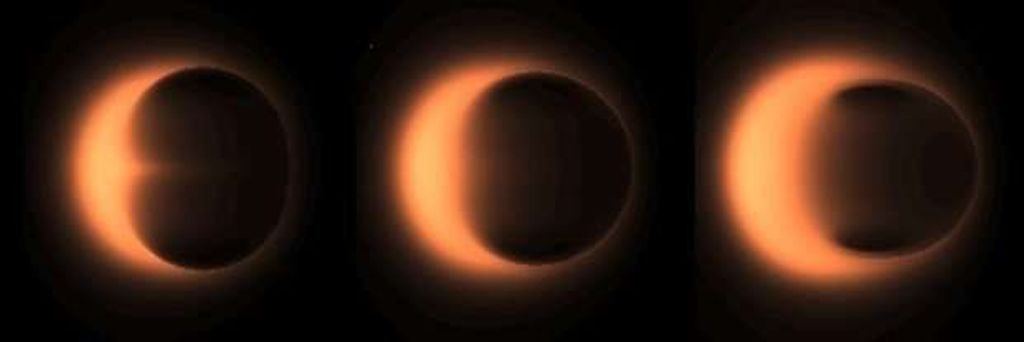The rumours you’ve heard are true. And if you haven’t heard the rumours, you should check your internet connection.
The Event Horizon Telescope (EHT) Collaboration has set an important press conference for April 10th. They haven’t come right out and said it, but a Media Advisory from the ESO, a partner in the EHT, says they will, “hold a press conference to present a ground-breaking result from the EHT.” If it’s not a black hole, what else would it be?
But of course it’ll be to announce the first picture of a black hole. That’s what the Event Horizon Telescope is all about. The EHT is an international effort to get the first picture of a black hole, and they’re doing it by creating a “virtual telescope” the size of the Earth.
The virtual telescope is more properly called a Very Long Baseline Interferometer. What that means is they’ve linked up radio antennae around the globe to observe the same object. This gives the telescope “high angular resolving power.” Basically, the bigger the ‘scope, the more detail we can see. And no telescope is as big as the Earth, except for the EHT.
What will the black hole look like?
Back in October 2018, the EHT released a simulated image of what they think they’ll see. Keep in mind, that scientists with the EHT will actually capture images of the black hole’s event horizon, because black holes don’t allow any light to escape. But in some respects, it’s the event horizon that is the business end of the black hole.

If it seems contradictory to say there’ll be a picture of a black hole and then to say that there can’t actually be a picture of a black hole, we get it.
Black holes have different parts, and once you understand their structure you understand the supposed contradiction. When most people think of a black hole, what they’re thinking of is the part called the Singularity. This is the place where, we think, there is infinite density. Everything that falls into a black hole goes here, and according to Einstein’s General Relativity, this is where General Relativity itself breaks down. So it’s kind of fascinating.
The Event Horizon lies directly on the perimeter of the Singularity, and it’s where the black hole’s gravity is so strong that nothing can escape. It’s the point of no return for everything, and it’s the “black” part of the black hole. Then there’s the Photon Sphere, the Relativistic Jets, the Innermost Stable Orbit, and the Accretion Disc.
The fine people at the ESO have kindly provided this detailed and gorgeous infographic.

SO, ESA/Hubble, M. Kornmesser/N. Bartmann
So now it should be clear why the EHT organization calls their Earth-size interferometer the “Event Horizon Telescope.” They want pictures of the Event Horizon itself.
What’s So Great About a Picture of the Event Horizon?
Black holes are one of nature’s most fascinating objects, way more fascinating than even the blue dragon.
The EHT actually has two targets, both black holes. The first is our very own Sagittarius A-star (Sag. A*), the behemoth that sits in the center of our Milky Way galaxy. The second is the even-more-massive black hole in the M87 galaxy.
There’s a lot of theorizing around what black holes are and what they do. But there are more questions than anything, and the EHT hopes to answer some of them.
The main question is what does one actually look like? Again, the problem is we can’t actually see one. But there’s a swirling, energetic disk of material near the hole itself. And all that swirling creates a lot of x-rays and other high energy radiation, which we can see. Hopefully, the EHT will be able to see the black hole’s shadow on all that light.
Another question is does a black hole cause General Relativity to break down? We think so, but the EHT will help us answer that. General Relativity is incompatible with quantum physics, so something has to give, and the point where it gives might be the black hole.

Another question is why do some black holes emit jets of material, while other don’t? Our own black hole, Sag. A*, doesn’t emit jets of material, while the other one in the EHT’s sights, in the M87 galaxy, does. Maybe the EHT will help answer that puzzling question.
In any case, it’s only another week until we find out what progress they’ve made with the EHT, and if we’re any closer to getting some answers.

